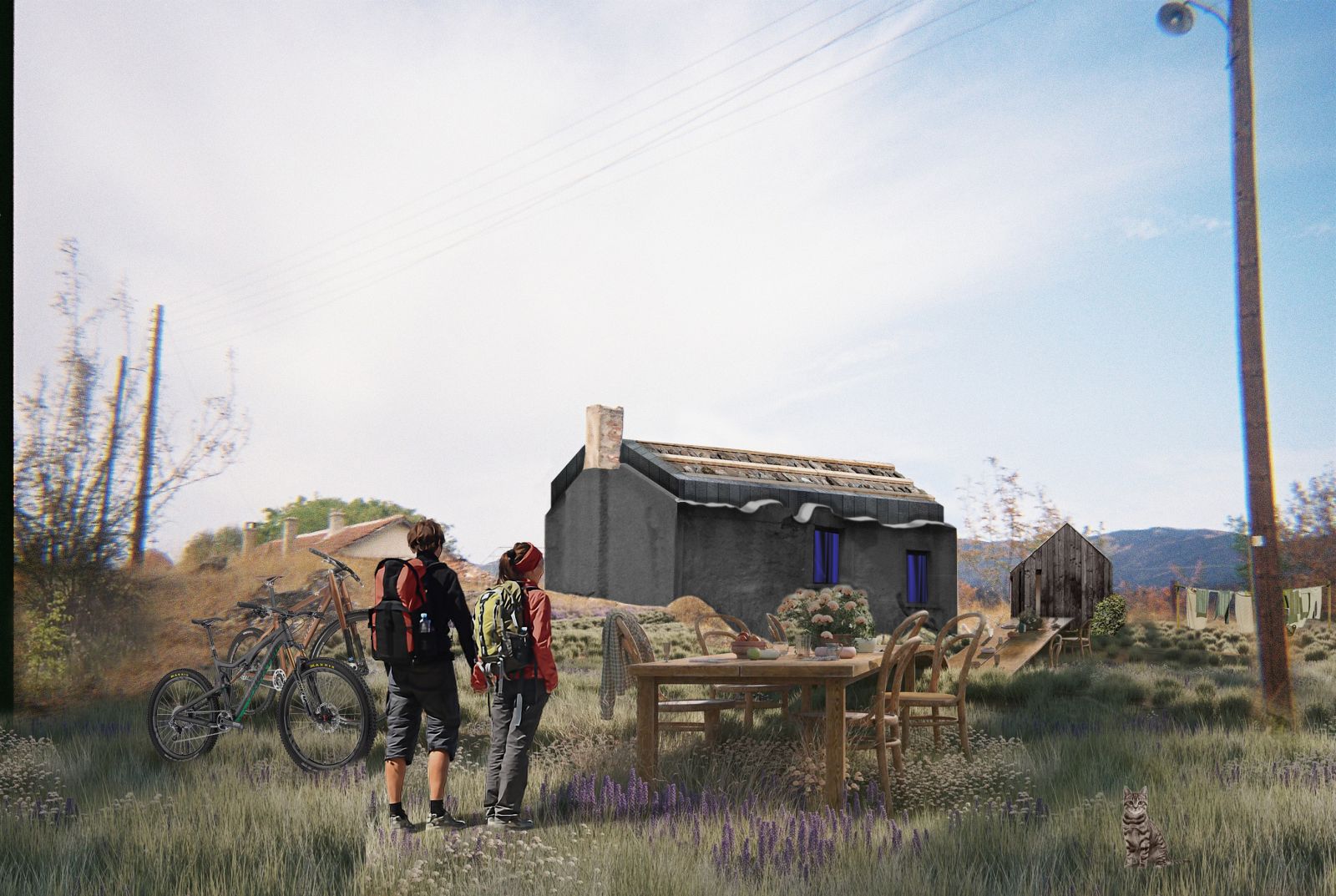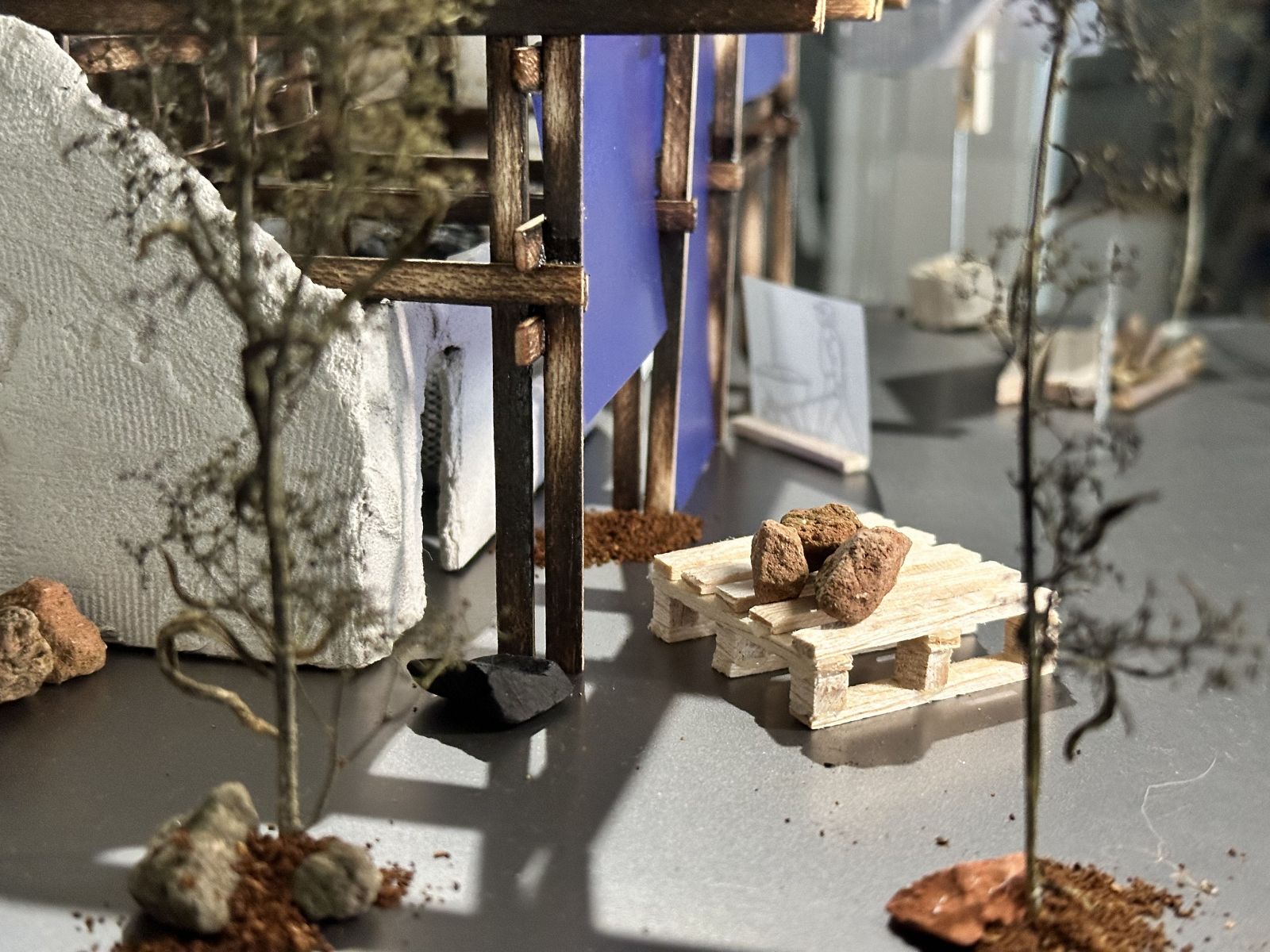
Ina Patsali
Keywords: Recovery, Fire-altered, Greece
My research navigates through the charred landscapes of the fire-altered landscape in Evros, especially the village of Kirki, revealing a layered tale of the intricate connections between human lives, environmental fragility, and the wider socio-political backdrop. In the architectural canvas of the post-disaster village, a vision for renewal takes shape. The juxtaposition of scorched earth and potential rebirth mirrors the delicate balance required in post-disaster design.
There is a big line of houses waiting to be demolished after the wildfire. This project suggests the re-use of those houses into spaces where the local community can take part in the revitalization process of all those buildings left in a state of collapse and bring life back to the village.
One house will be the material library: all the salvaged materials and products in the ruins can first be collected and sorted, to be reused, time and again, closing the loop. Another house will be a communal garden; architecture can only act as an intermediary between the Kirki of the past and of the present and cannot do anything other than activate the healing process. Last one will be temporal shelter for the eco-tourism of the national forest, activating the local economy and getting the story of Kirki known.
Designing with the burned material will transform the houses into points of memory, underlining life's cyclical aspect and the potential for rejuvenation after the devastation.
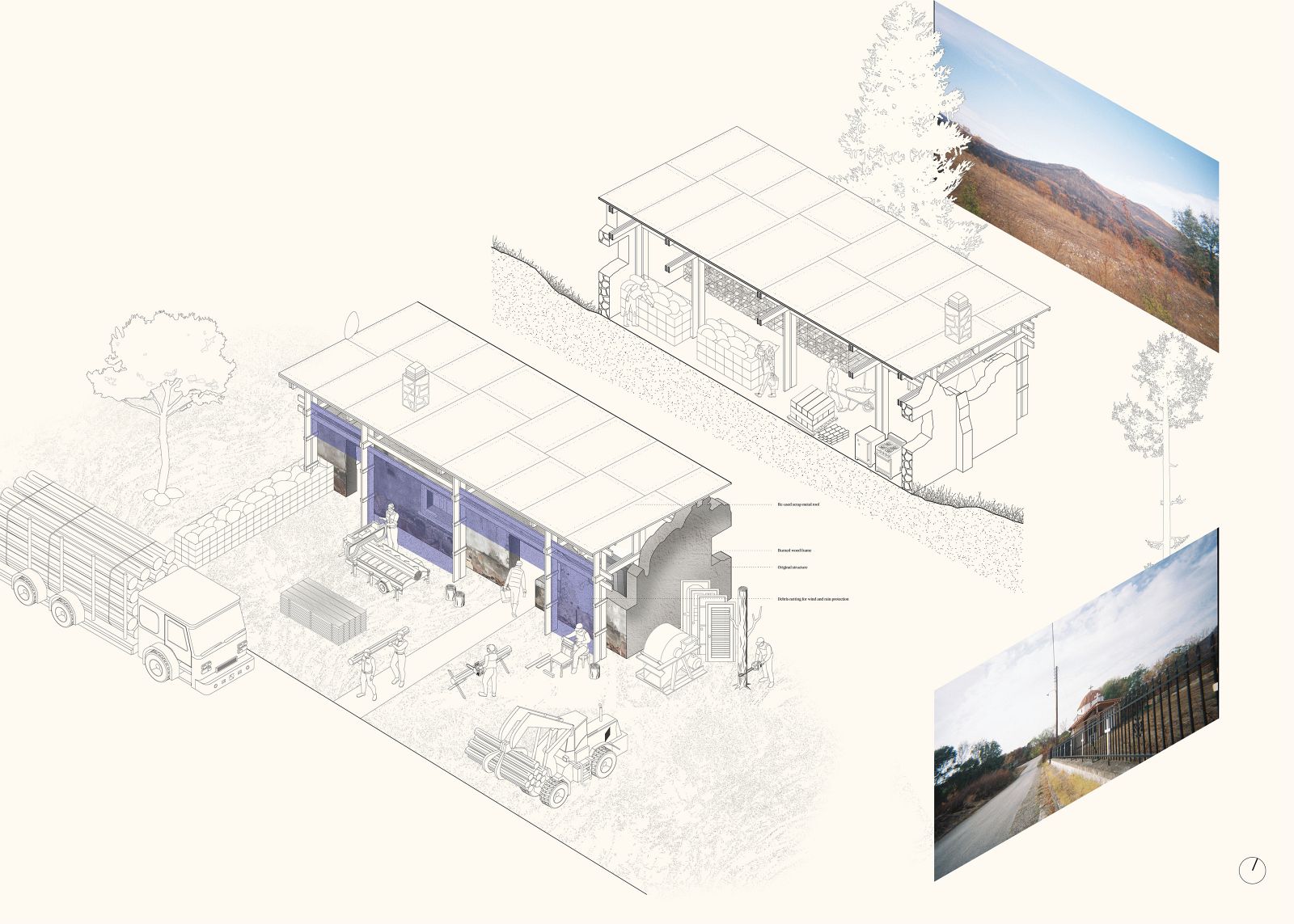
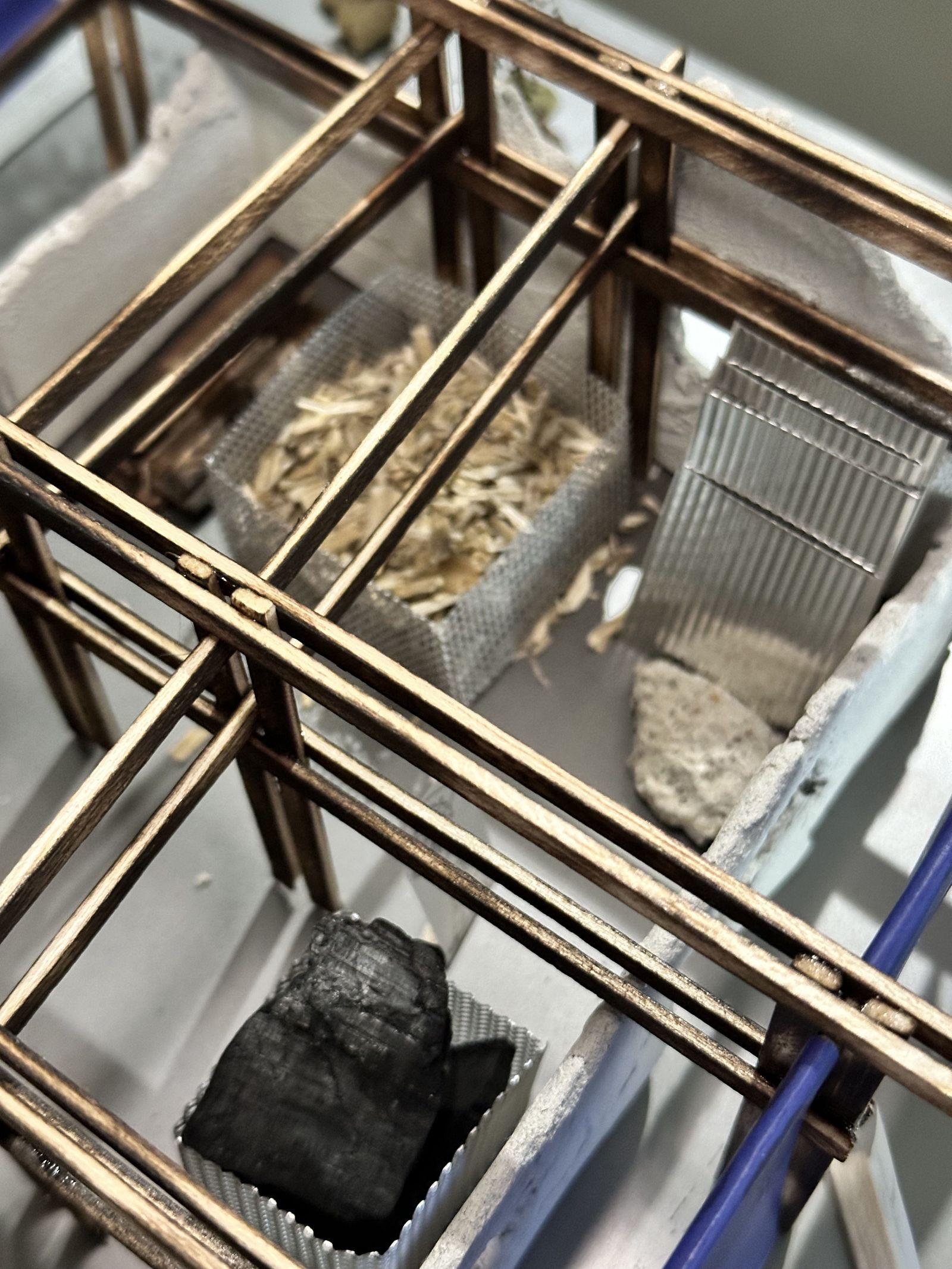

How can we transform materials and give them a new life to help reduce waste?
By creating an initiative run by local craftsmen, all the materials in the ruins, as well as all over the area, can first be collected and sorted before ending up in a landfill. Registering and documenting the salvaged materials and products provides insight into how these resources could be reused, time and again, closing the loop. The material library becomes the first step to finding new spatial qualities of the transformed materials, altered by the fire.

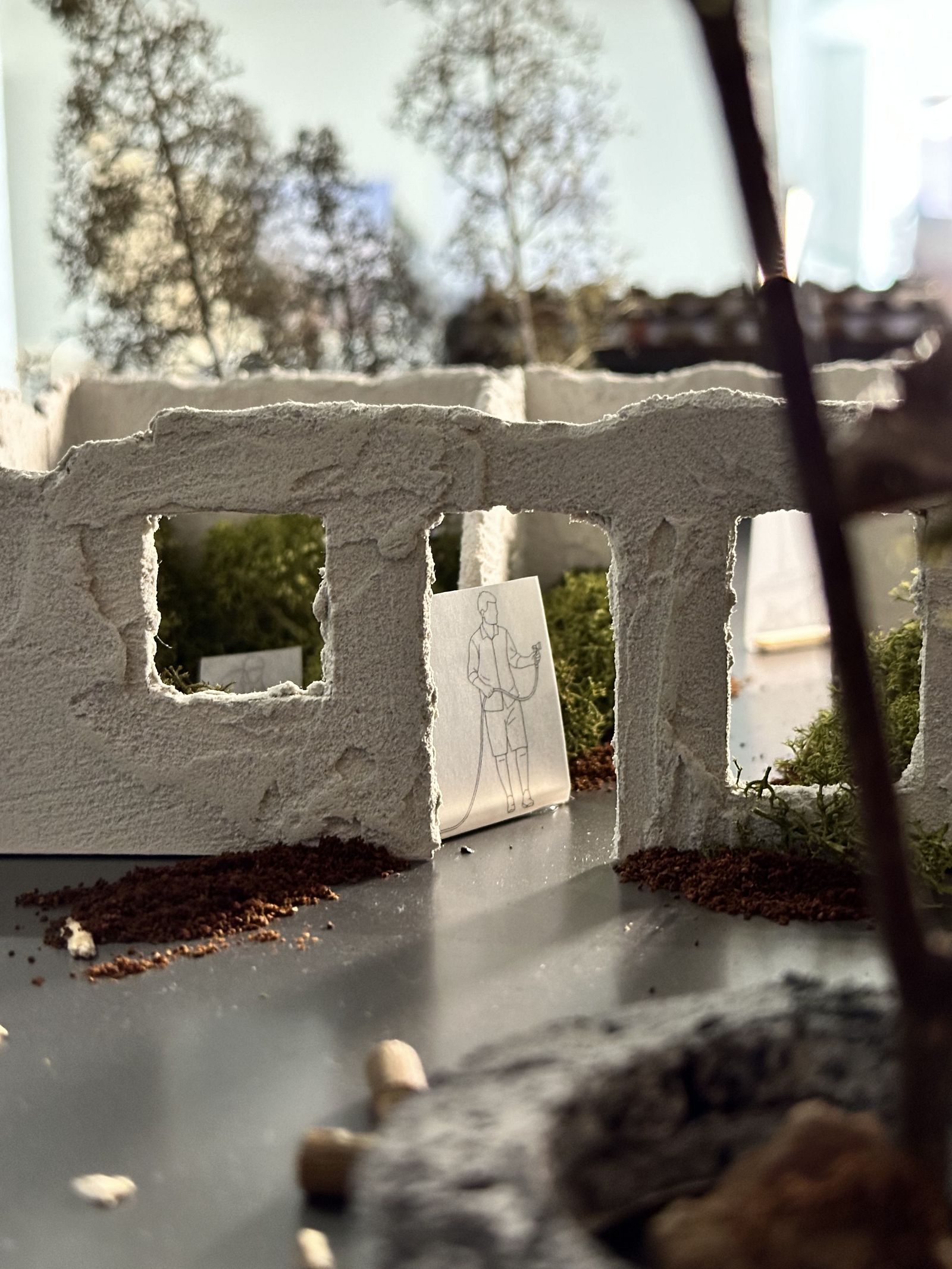


Cultivating a small vegetable garden where a home previously stood, the residents can take part in the revitalization process of nature and of this building left in a state of collapse.Through my research, the importance of the cemetery for the residents of Kirki, acting as a sanctuary and a meaningful space, becomes evident.
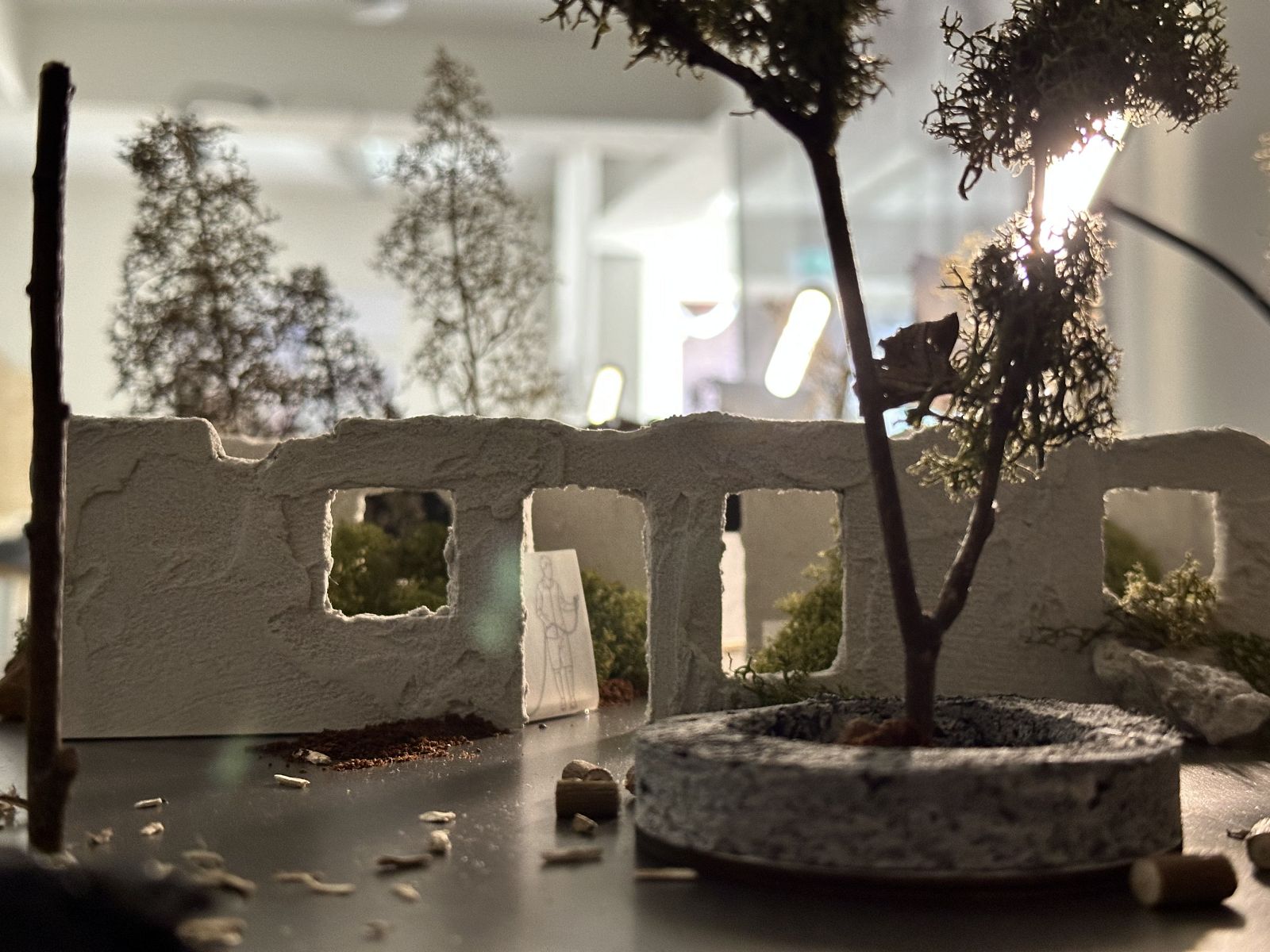
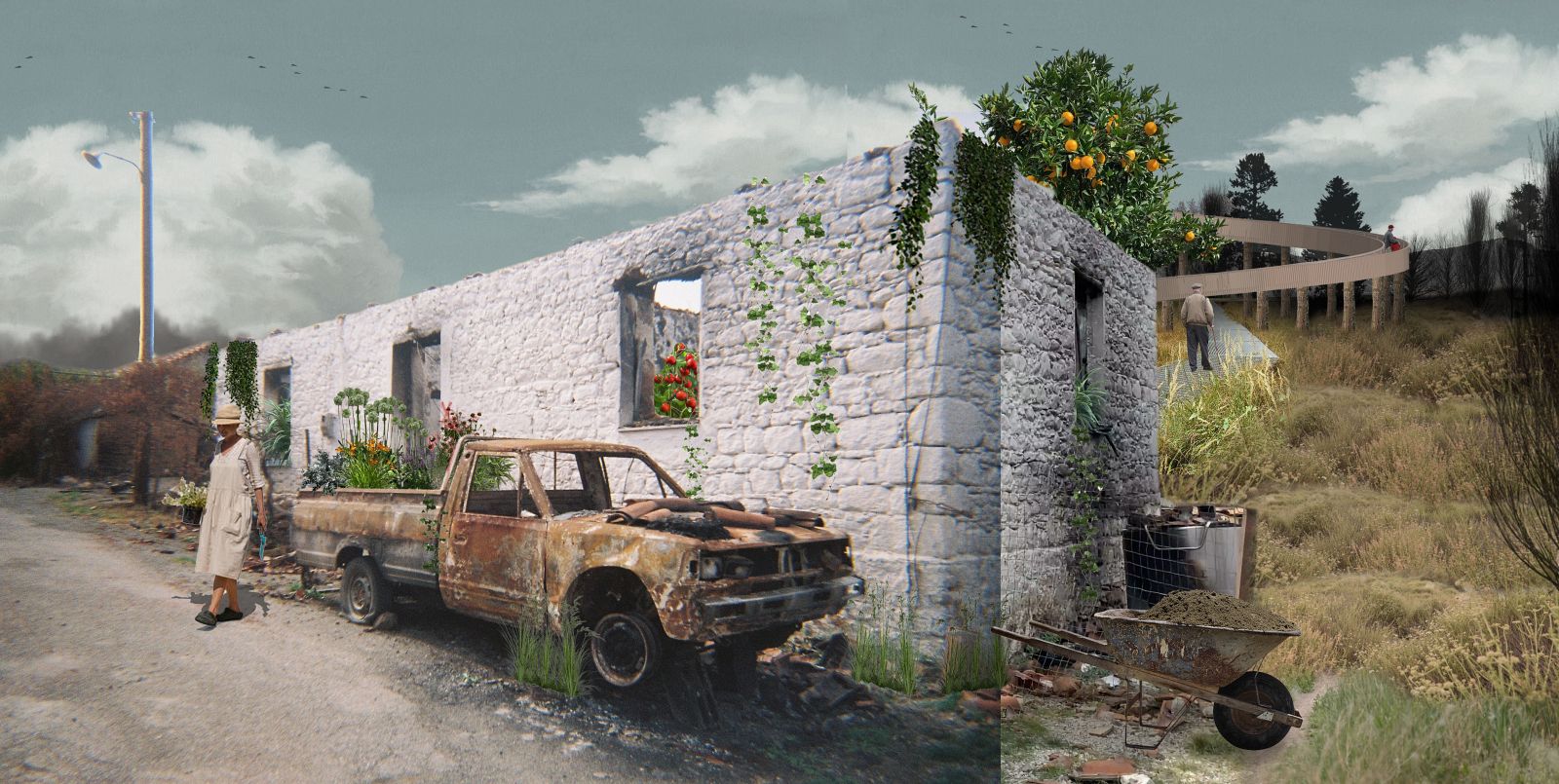
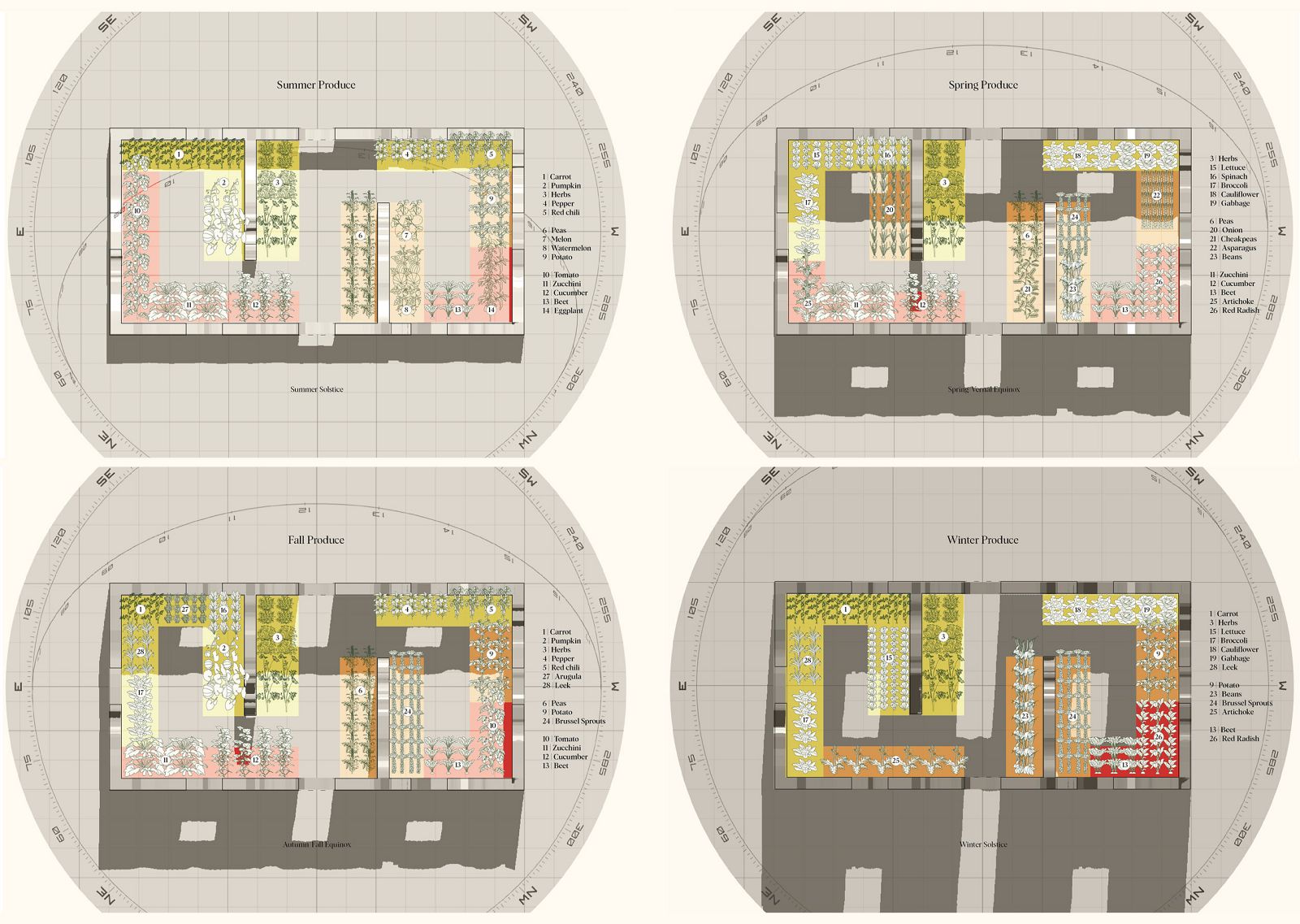

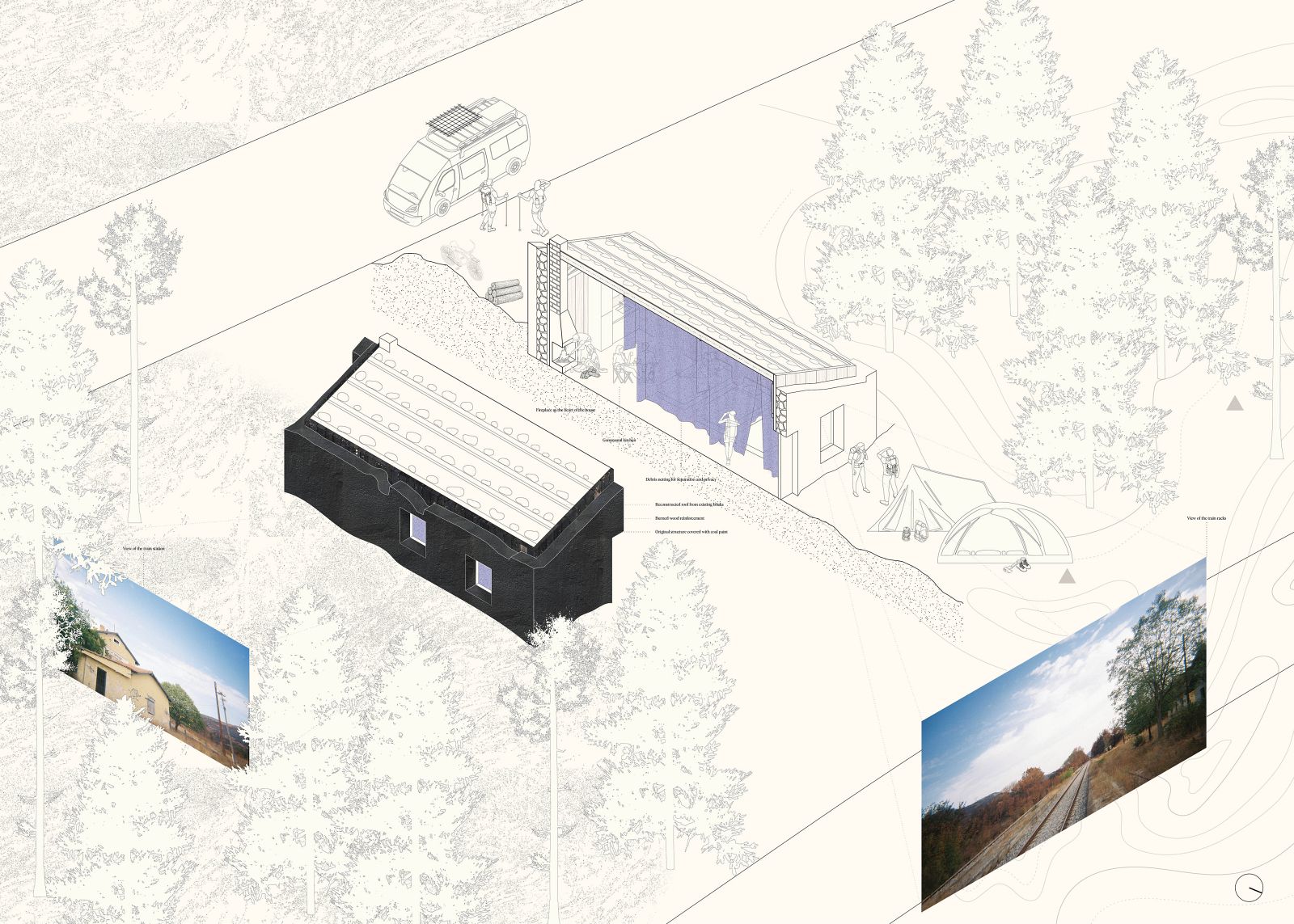
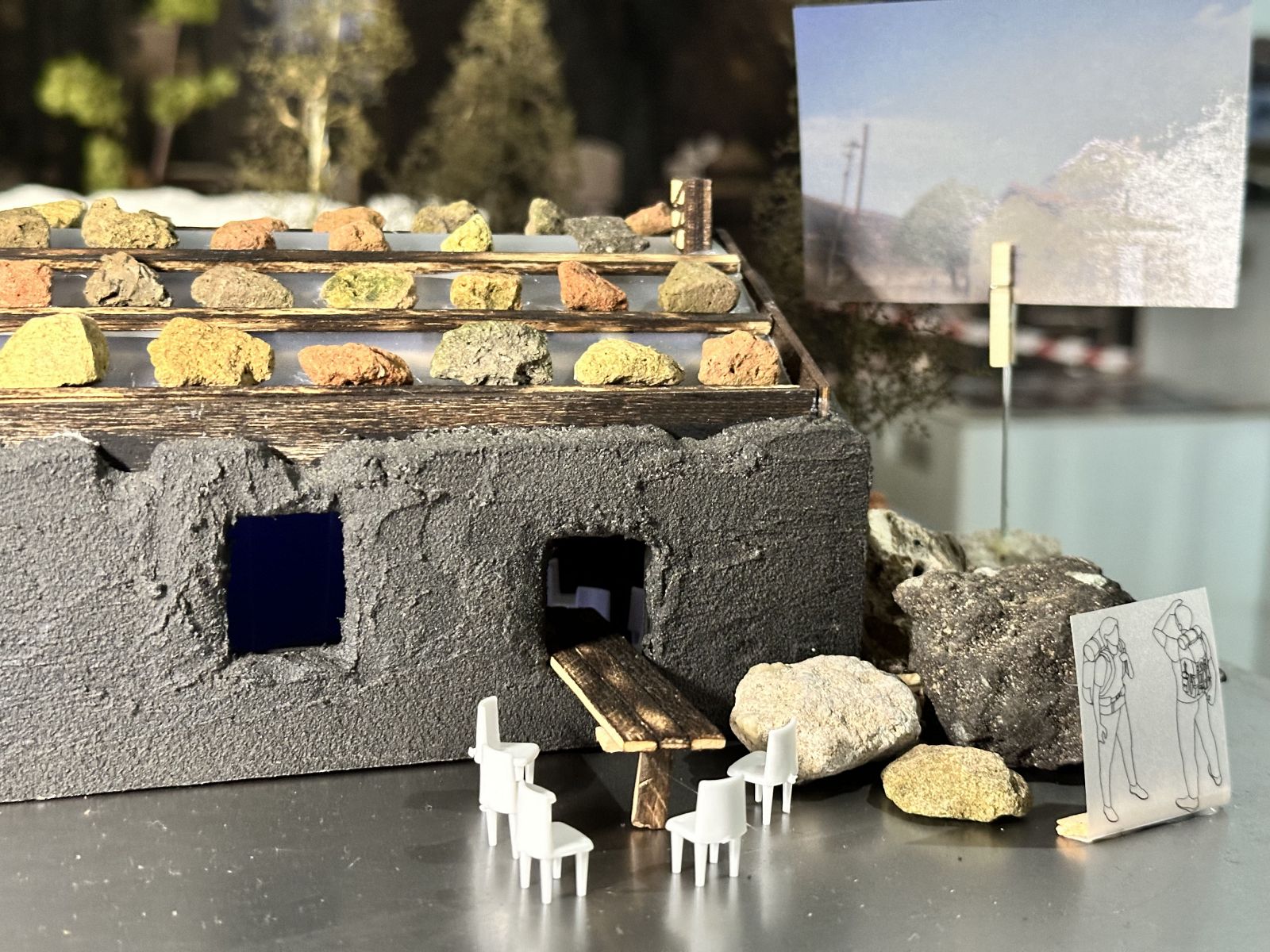
How can architecture reactivate the local economy and getting the story of Kirki known?
Kirki is in the middle of many outdoors activities.Yet, the closest accommodation options are not close to the village. Reusing a ruin next to Kirki’s train station as temporal shelter for the eco-tourism of the national forest can accommodate the hikers and nature lovers of the national forest. Looking at the material library, the shell is reinforced with burned wood and the rooms are divided with scaffolding netting, this time referencing to domesticity.
